Edible Flowers For Salads
HOW TO START EATING FLOWERS
There's no reason for a salad to be mostly green, predictable and bland. Give cucumbers a rest and try a fresh kind of topping: edible flowers.
Bold yet common flowers like marigolds and nasturtiums are safe to eat, and when they're mixed into a salad, they add elegance, color and spice.
Here's a guide to help you start sampling edible flowers: where to find them, what they look like, and most important of all, what those pretty petals taste like.
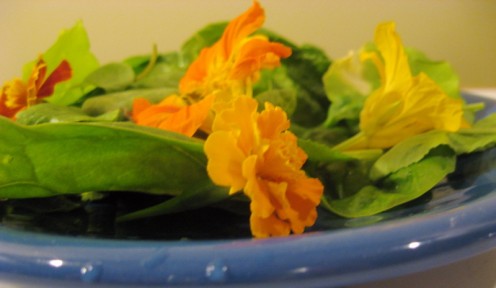
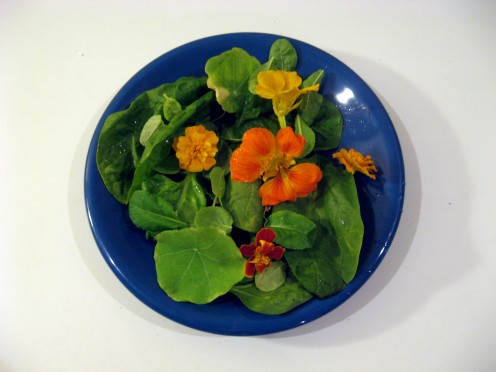
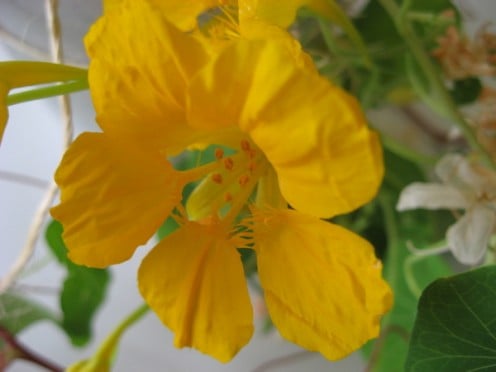
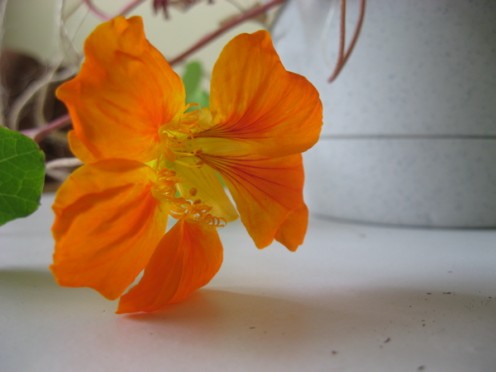
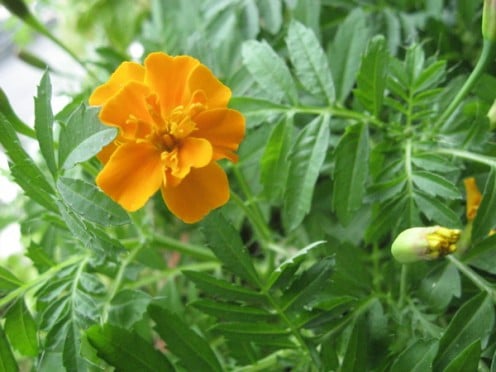
POLL
Have you tried edible flowers?
WHAT DO EDIBLE FLOWERS TASTE LIKE?
- Marigold petals taste like mild lettuce.
- Nasturtium flowers are as spicy as they are colorful, yet they are not quite as strongly flavored as nasturtium leaves. There's also a bit of a sweet aftertaste to the flowers.
- Cilantro flowers, which come in clumps of tiny, frilly white blooms, taste just like fresh cilantro leaves, perhaps with an extra hint of pepper.
- Basil flowers, also white, have the same flavor as basil leaves, but it is much more intense.
- The petals of arugula flowers are pinkish-white and laced with purple-colored veins. The flavor of the petals is mild, but the base of the flower has the spicy-bitter flavor of arugula leaves.
DISCOVERING EDIBLE FLOWERS
If you're curious to try other edible flowers, you're in luck. The
blossoms of many common culinary herbs are safe to eat and will
complement salad greens. So are the flowers of other garden plants. Here are some more examples:
- Lavender: purple and spicy. Learn more about cooking with lavender.
- Sage: purple or blue.
- Mint: various colors. Learn more about growing mint.
- Squash blossoms: large and delicate flowers in shades of yellow and orange.
- Chives: purple-pink, spherical flowers.
CAUTION
Please be absolutely certain what you are putting in your mouth before sampling any flower! Plants with similar looks aren't always similarly safe to eat. For example, sweet peas, my favorite kind of sweet smelling flower, are not edible flowers. Yet the very similar-looking flowers of the garden pea plant are safe to eat.
- Be careful, and don't make assumptions.
WHERE TO FIND EDIBLE FLOWERS
Grow your own: Try growing your own edible flowers from seed. Nasturtiums, marigolds and many culinary herbs will thrive indoors on a sunny windowsill. A few $1 packet of seeds will produce enough blossoms to garnish salads for several months. If you plan to harvest flowers from herbs you grow yourself, note that some plants stop producing new growth after they are allowed to flower.
Buy edible flowers: Edible flowers are sometimes sold in boxes in the produce section of some supermarkets. In New York City, I've seen small boxes of edible flowers for $5 at the outdoor greenmarket in Union Square.
Know the source: Be cautious about eating flowers that are sold as anything other than food products. Even if the plant itself in edible, it may have been treated, handled or stored with chemicals that aren't so good for you.
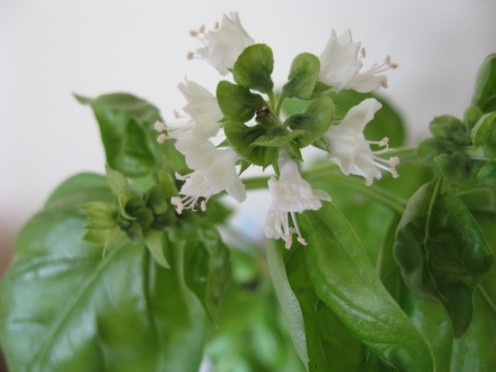
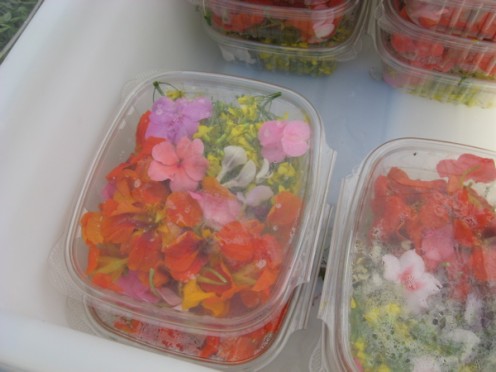
QUIZ: Which flowers are safe to eat?
view quiz statisticsEDIBLE FLOWERS: RESOURCES
All the flowers described in detail above are ones I've sampled and lived to tell about, but don't just take my word for it. Seek out other reliable guides to safe, edible flowers. Here are some free resources:
"Edible Flowers," NC State University: Horticulture Information Leaflets
- This guide lists edible flowers by color and flavor, with warnings about which flowers are edible only in moderation.
- From the introduction: "Flowers have traditionally been used in many types of cooking:
European, Asian, East Indian, Victorian English, and Middle Eastern.
Early American settlers also used flowers as food. Today, there is a
renewed interest in edible flowers for their taste, color, and
fragrance."
"Edible Flowers," Colorado State University Extension
- This guide explains how to select and prepare flowers for culinary use. It also includes a list of common but toxic flowers.
- From the introduction: "Do not use flowers that have been sprayed with pesticides, which often
occurs along roadsides, or collect flowers from plants that have been
fertilized with untreated manure. Generally avoid purchasing flowers
from florists, garden centers or nurseries. These flowers are not grown
for consumption."
"Edible Flowers," National Sustainable Agriculture Information Service
- From the introduction: "This publication discusses some of the basic production and marketing concerns for edible flowers and offers some cautions on non-edible or toxic flowers. Also included are sources of additional information on edible flowers, in print and on the Internet."
MORE ABOUT FLOWERS, HERBS AND GARDENS
- The One Window Herb Garden
Even if only one window in your house or apartment gets good light, it's possible to start an herb garden and find satisfaction in harvesting pinches and sprigs of your own homegrown herbs. - Sweet Smelling Flowers: 7 Kinds of Fragrant Flowers
A guide to fragrant, sweet-smelling flowers: From lilacs to freesias, these flowers are treat for the nose. - Starting a Culinary Herb Garden At Home
When you cultivate your own mix of fresh herbs, you'll be unconstrained by the varieties usually sold in a supermarket. The only limits are your time, patience and gardening skill. - Culinary Lavender
No spice lover should skip culinary lavender. That's especially so for spice fanatics who like a dash of hotness in their desserts. If you think mixing a bit of pepper into chocolate is an amazing idea, you may love baking with lavender. - Mints: From Chocolate Mint To Peppermint
Mints are hardy, versatile herbs that come in a wildly varied range of shapes and flavors. Take fresh pineapple mint. It's as different from peppermint as it is from Standard Issue Toothpaste. - Spring Flowers in Central Park
Spring flowers aren't impossible to find in New York City. April is the best month to see magnolias, tulips and lilacs in bloom in Central Park.









